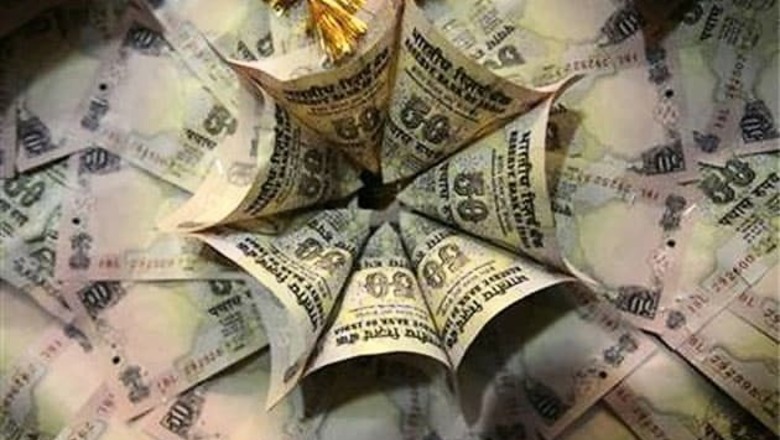
views
Mumbai: The rupee slumped to a record low against the dollar on Wednesday, ratcheting up pressure on policymakers to restore confidence in the currency at a time when appetite for risky assets is ebbing around the world.
The rupee fell beyond the symbolically significant level of 56 to the dollar, and traders said it could fall further to 57. The currency has already dropped more than 13 percent from its 2012 peak in February.
Global risk aversion, brought on by the debt crisis in the euro zone, has exposed India's vulnerabilities, most prominently a current account deficit that reached 4.3 percent of GDP in the December quarter. The economy depends on capital flows to bridge the gap.
That dragged down the balance of payments into a deficit of $12.8 billion at the end of 2012, the first shortfall in three years.
Worries about the government's finances, sluggish policy reforms, and a recent controversial tax proposal on foreign investment have all helped make the rupee Asia's worst performing currency this year.
Although foreign selling has not yet reached alarming levels, concern that overseas investors will choose to sell Indian assets has cast a long shadow over local markets.
"India is one of those odd cases where the bottom-up corporate environment is very strong but it is challenged by poor politics and macroeconomic policies," said Pranay Gupta, Asia chief investment officer for Lombard Odier.
The political will to take tough steps to put Asia's third largest economy back on a firm growth path was lacking, he said.
Still, foreign investors have not yet staged an exodus from Indian markets. Though they sold a net $930 million in debt and stocks in April, they are slight buyers in May as of Tuesday and significant net buyers in the year to date.
After intervening earlier this month, the central bank has turned cautious on selling dollars because global risk aversion is undermining most emerging market currencies.
Traders estimated the RBI sold $100-$250 million earlier on Wednesday in its first intervention in three sessions. But the amount was too small to stem the rupee's fall.
As a result, the rupee fell as low as 56.2250, marking the sixth consecutive trading day that the currency has hit a record low. It recovered slightly to close the day at 55.9950/56.0050.
Non-deliverable forwards are pricing in more weakness, implying levels of 56.46 in a month's time and 57.25 in three months. Citing technical chart anlaysis, Standard Chartered said in a report on Tuesday the rupee could fall to as low as 58.62.
The central bank has taken several measures to try to stem the rupee's slide, including raising deposit rates for non-resident Indians and forcing exporters to convert half of their foreign currency holdings into rupees, but to no major effect.
"It is the time to press the panic button," said Rupa Rege Nitsure, chief economist at Bank of Baroda.
"The government has to do something right now to reverse investor sentiment, so that India can start attracting capital inflows," she added.
India's foreign reserves total nearly $292 billion, enough for roughly six months of imports, down from $320 billion in October. The RBI spent more than $20 billion in spot-market intervention between September and March, the latest data shows.
The central bank does have measures it could deploy, such as selling dollars to state oil importers, which Nomura argues would reduce dollar demand in the currency market by $8.8 billion per month.
The RBI may consider to such a move, people familiar with the matter said, although it is not yet clear whether the central bank will implement such a plan.
However, analysts say that the best defense for the rupee rests with the government, which they say needs to implement more confidence-boosting measures about its finances and stimulate investmment.
Morgan Stanley downgraded India's economic growth forecast for 2012 to 6.3 percent this week, below the levels of the Lehman crisis, citing the government's propensity for fiscal policies that support consumption at the expense of private investment.
"We believe policy makers' decision to continue the bad mix of growth since the credit crisis is at the heart of most of the macro challenges facing the country," it said.


















Comments
0 comment